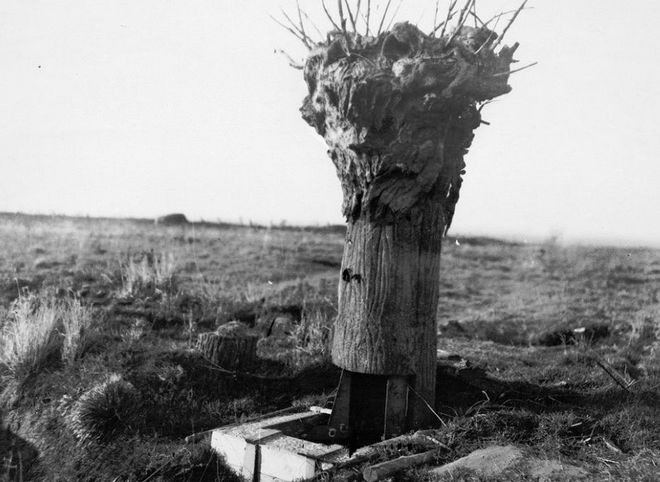Unique 'camouflage' method for watchtowers during World War I
The burnt tree trunks on this battlefield turned out to be very effective enemy watchpoints during the First World War.
Since ancient times, camouflage has always been an important tactic in any war. Camouflage brings surprises to the opponent and is also a way to protect the forces of each party.
In World War I, there were many types of camouflage and camouflage-style camouflage as in this article was a very creative way.

Camouflage the hut into a tree trunk.
To ensure that the enemy's information is always closely monitored, the parties are constantly monitoring the enemy from afar in many ways. One is to send scouts to grasp the enemy's situation or install spy spies. However, these are quite dangerous ways.
So to observe the other side move easily and avoid being suspected or killed, because just sticking its head on the trench was likely to be destroyed immediately, the French army came up with a "marvel" is quite good. They disguised dead trees as observatories on the battlefield without being suspected by the enemy.
After that, the French army also transmitted this experience to the British and to the Germans.
However, because the battlefield is always watched by enemies, it is difficult to build a completely new tree. Because any new trunk will immediately attract the enemy's attention. So soldiers had to replace fake trees at the location of a tree that had existed before.
Normally soldiers will choose dead or devastated trees by bombs near the trenches. After that, the tree will be perforated and nest a steel pipe system.
At night, taking advantage of the darkness, soldiers began installing pipes into the real tree. In addition to night battles with gunshots, artillery fire also drowned out the noise from the installation of an observatory on the tree.
The system is installed deep under the tree and the entrance is also hidden carefully. If unfortunately the enemy found the trenches and holes in the trunk, the observatory made sure the risk of being destroyed.
Soldiers after successfully installing the observation deck inside the trunk can climb a small ladder that is screwed inside the steel pipe. At the position near the top of the ladder, they can track enemies from afar through observation holes. In order to avoid suspicion, they did not punch too loudly but only punched small holes and used periscope lenses.
Although this disguise is somewhat simple, it is surprisingly effective when few enemy troops discover this.

Diagram of manufacturing observatory on trees.

The process of building fake trees and observatory.

An observatory model in the trunk with a follower.

The observatory in the trunk was first built in 1916.

An observatory uses cloth and steel to camouflage the trunk.This location is near Souchez, France in May 1918.

Entrance to this observatory.

A soldier hid in a fake tree.

Two Australian soldiers were checking a tree to see if they were eligible to be an observation post.
- Stealthy assassins in nature
- 12 buildings with the most
- Japanese style camouflage dress
- The US military tested the 'invisible' camouflage suit for snipers
- Production of ink-inspired camouflage material
- The ability of extreme animal camouflage
- Admire the extreme camouflage art of animals
- Russian scientist finds a unique way to cure cancer
- Decode the disguise of fish
- Dinosaurs camouflage with skin color to deceive the enemy
- Camouflage technology like octopus
- Spotted spiders transform into bird droppings
 'Fine laughs' - Scary and painful torture in ancient times
'Fine laughs' - Scary and painful torture in ancient times The sequence of numbers 142857 of the Egyptian pyramids is known as the strangest number in the world - Why?
The sequence of numbers 142857 of the Egyptian pyramids is known as the strangest number in the world - Why? History of the iron
History of the iron What is alum?
What is alum?